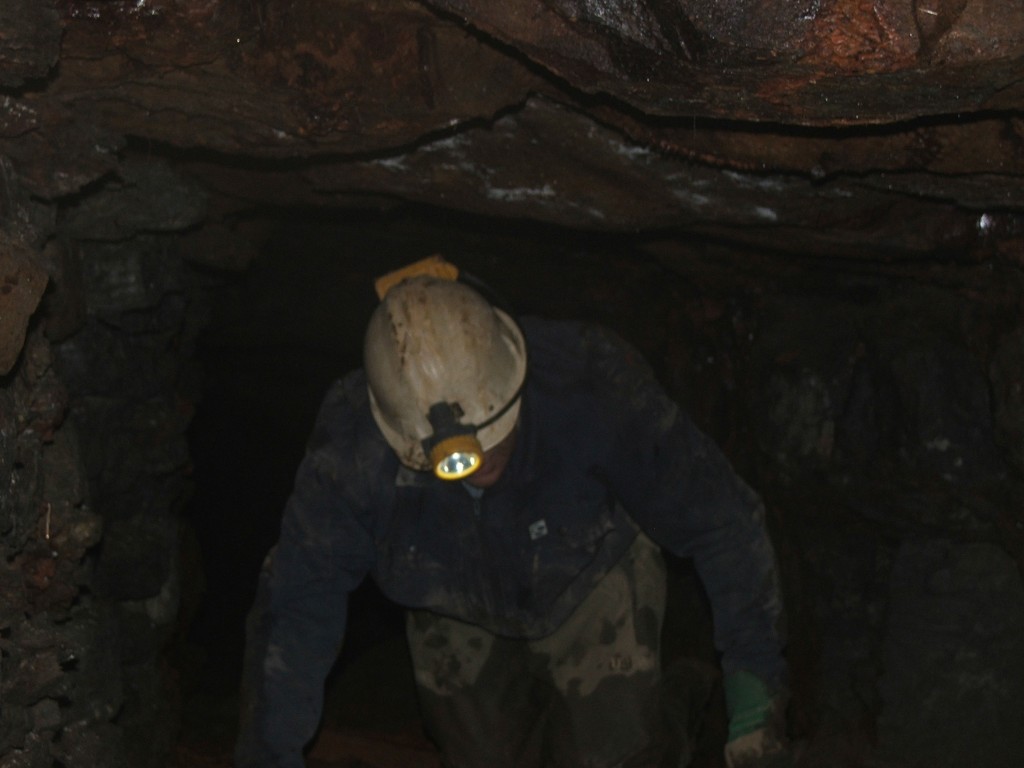The group walked from Robin Hood’s Bay north along the old railway track, now referred to as The Cinder Track, to Clock Case Nab to look at the sites of extensive jet mining activity.
A display board at the station car park declares that cinders were used as ballast on the railway instead of the ‘…usual crushed stone.’ Surely weren’t railway trackbeds ballasted with ashes from engine sheds until more recent times when crushed stone was introduced because of its greater ability to bind together and support heavier and faster trains. Yet again an interpretive panel conveying dodgy information!
On the cliff edge at Clock Case Nab we climbed down onto the ledge or dess cut into the cliff face for working the jet seam. Apparently the mining of jet was allowed along a narrow strip of cliff edge, its inland edge defined by a stone wall; presumably this was to protect productive agricultural land from damage. Originally quite a broad dess was probably defined, the spoil being simply tipped over the cliff edge into the sea from the initial quarrying. As the depth of overburden increased it became necessary to commence mining by driving small drifts into the cliff at the lowest level of the jet seam; inevitably these drifts being generally small.
Southwards around Crase Nase the dess or working level is less well-ordered and comprises a ledge below the cliff top full of spoil mounds, barrow-ways, and several drifts, both collapsed and open. We herded into one drift to get out of the cold wind; it was all of 5 feet high and about 10 feet deep into the shale cliff. Another one nearby seemed to have been driven deliberately parallel to the defining stone wall.
Any jet mined from here would have been sold in Whitby and the period of working of these particular quarries seems to have been between about 1830 and 1900, although in the cliffs and on the foreshore nearby jet mining and collecting still goes on occasionally today.
We returned along the cliff top to Robin Hood’s Bay car park via the posh streets of Baytown built to take advantage of the view across the bay, and the nearness of the railway station. Lunch was taken in the car park at the former station, amongst the crowds of people determined to enjoy the festive break.
The afternoon was spent at Castleton looking at the two inclines which rise steeply above the north side of the railway station which is still known in railway parlance as ‘Castleton Moor’ for some obscure reason.
A large stone building housed a stone crushing plant and survived here until a few years ago when it was demolished and the site to house small business units. Stone came down an incline to the crusher, passing over a track by a bridge of which a well-made abutment and single pier still remain.
The climb up the eastern incline over the heather covered hillside was invigorating in the cold wind and drizzle, enlightened by finding the odd length of narrow gauge rail. Near the top is a single kip among very extensive quarries, both from the earliest sandstone quarries and later ganister workings. We also found a valve at the base of a dam for a former reservoir.
Heading west across the quarried ground we came to the top of the western incline where bits of worn metal remain, presumably from the brake gear of this self-acting incline, and several sections of stone wall from associated buildings, surprisingly roughly built.
The western incline is narrower than the other one but only slightly shorter, finishing abruptly at a track just above the whinstone quarry with no sign of any tipping point.
Quite a large whinstone quarry has operated at Castleton but is now largely filled in and its western end occupied by a rather neglected tennis court.
Altogether a visit to two interesting but largely unpublished sites worth much more investigation and recording.





